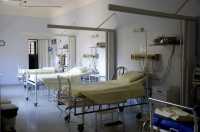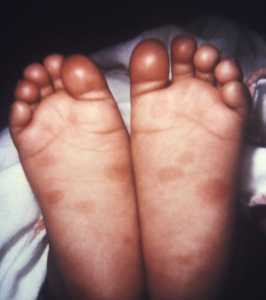MedicalResearch.com Interview with:
 Prof. Ciccozzi Massimo
Prof. Ciccozzi Massimo
Clinical Pathology and Microbiology Laboratory
University Hospital Campus Bio-Medico of Rome, Italy; Department of Infectious, Parasitic, and Immune-Mediated Diseases, Epidemiology Unit, Reference Centre on Phylogeny, Molecular Epidemiology, and Microbial Evolution (FEMEM), National Institute of Health, Rome, Italy.
MedicalResearch.com: What is the background for this study? What are the main findings?
Prof. Massimo: In the spring 2011 civil war becoming in Syria providing condition for diseases outbreaks In the Syrian Arab Republic before the crisis, the access to health services increased since the 1980s, with better equity between the rural populations and the middle class. the capacity of the health system, so as the quality of care, were not sufficient to improve the decrease the inequity. As normally happens the onset of civil war can led to the complete deterioration of the health infrastructure through the destruction of facilities.
We describe a group of 48 Syrian migrants arrived in the second week of October 2015 in the asylum seekers centre (ASC) in Rome (Italy) where they receive social, legal and health assistance. An internal healthcare facility (IHF) is operative where specialized personnel (e.g. infectivologist, nurses and psychologist) was prompt to receive the Syrian people making them all the tests for microbial agents presence (bacterial and virus agents).
This group is of importance not only because refugee from the tremendous civil war but also because stopped in this Centre for only twenty days. Our aim was the knowledge of their health status, this is important for people that have to travel in north Europe facing many kilometers again.
Rectal, nasal and pharyngeal swabs were collected from all refugees, whereas serum samples were available from 30/48 subjects. Eighteen refugees refused phlebotomy for blood collection for religious reasons.
All refugees resulted negative for HBV, HBC and HIV infections. Bacterial microorganism and fungi isolated from surveillance swabs were found with Gram-negative bacteria representing by a larger number of species than Gram-positive and fungi microorganisms.
These reports enforce the hypothesis that circulation of new emerging pathogens found, can be source of infection in susceptible patients or nosocomial settings.
Interestingly, in some subjects, polymicrobial colonization was found and in some cases until to six different microorganisms, potentially pathogens, were isolated in the same individual. The microbiological surveillance performed in this group of Syrian migrants upon their arrival in Italy evidenced the carriage of unusual microorganism, potentially pathogens and carriers of antimicrobial resistance in some cases, that could be introduced in the country giving asylum. These migrants moving from a country to another could promote the diffusion of these microorganisms within different settings during their traveling around the world.
(more…)







 Kathryn M. Edwards, M.D.
Sarah H. Sell and Cornelius Vanderbilt Chair in Pediatrics
Professor of Pediatrics
Vanderbilt University School of Medicine
Dr. Edwards discusses the statement from the Infectious Diseases Society of America (IDSA) regarding the Centers for Disease Control and Prevention’s new data on child vaccine rates across the United States.
MedicalResearch.com: What is the background for this study? What are the main findings?
Response: To monitor the uptake of vaccines the CDC conducts a National Immunization Survey each year. This survey is conducted by random-digit dialing (cell phones or landlines) of parents and guardians of children 19-35 months of age. The interviewers ask the families who provides the vaccines for their children and if these providers can be contacted to inquire about the immunizations received. The overall response rate to the telephone survey was 26% and immunization records were provided on 54% of the children where permission was granted. Overall 15, 333 children had their immunization records reviewed.
When comparing immunization rates for 2017 and 2016, the last two years of the study, several new findings were discovered.
First the overall coverage rate for 3 doses of polio vaccine, one dose of MMR, 3 doses of Hepatitis b, and 1 dose of chickenpox vaccine was 90%, a high rate of coverage. Children were less likely to be up to date on the hepatitis A vaccine (70%) and rotavirus vaccine (73%). Coverage was lower for children living in rural areas when compared with urban areas and children living in rural areas had higher percentages of no vaccine receipt at all (1.9%) compared with those living in urban areas (1%).
There were more uninsured children in 2017 at 2.8% and these children had lower immunization rates. In fact 7.1% of the children with no insurance were totally unimmunized when compared with 0.8% unimmunized in those with private insurance. Vaccine coverage varies by state and by vaccine.
Kathryn M. Edwards, M.D.
Sarah H. Sell and Cornelius Vanderbilt Chair in Pediatrics
Professor of Pediatrics
Vanderbilt University School of Medicine
Dr. Edwards discusses the statement from the Infectious Diseases Society of America (IDSA) regarding the Centers for Disease Control and Prevention’s new data on child vaccine rates across the United States.
MedicalResearch.com: What is the background for this study? What are the main findings?
Response: To monitor the uptake of vaccines the CDC conducts a National Immunization Survey each year. This survey is conducted by random-digit dialing (cell phones or landlines) of parents and guardians of children 19-35 months of age. The interviewers ask the families who provides the vaccines for their children and if these providers can be contacted to inquire about the immunizations received. The overall response rate to the telephone survey was 26% and immunization records were provided on 54% of the children where permission was granted. Overall 15, 333 children had their immunization records reviewed.
When comparing immunization rates for 2017 and 2016, the last two years of the study, several new findings were discovered.
First the overall coverage rate for 3 doses of polio vaccine, one dose of MMR, 3 doses of Hepatitis b, and 1 dose of chickenpox vaccine was 90%, a high rate of coverage. Children were less likely to be up to date on the hepatitis A vaccine (70%) and rotavirus vaccine (73%). Coverage was lower for children living in rural areas when compared with urban areas and children living in rural areas had higher percentages of no vaccine receipt at all (1.9%) compared with those living in urban areas (1%).
There were more uninsured children in 2017 at 2.8% and these children had lower immunization rates. In fact 7.1% of the children with no insurance were totally unimmunized when compared with 0.8% unimmunized in those with private insurance. Vaccine coverage varies by state and by vaccine. 




